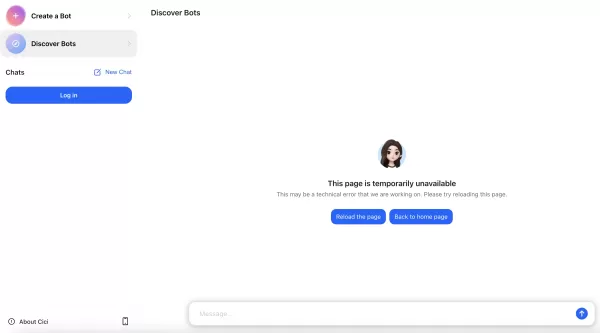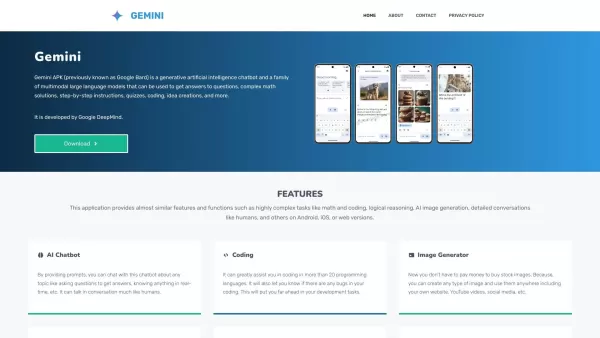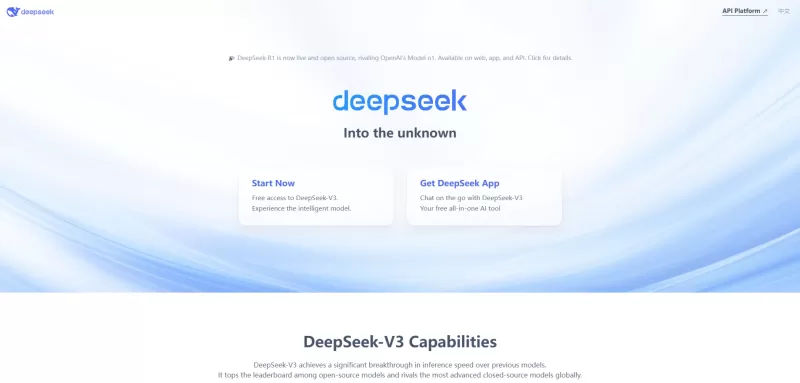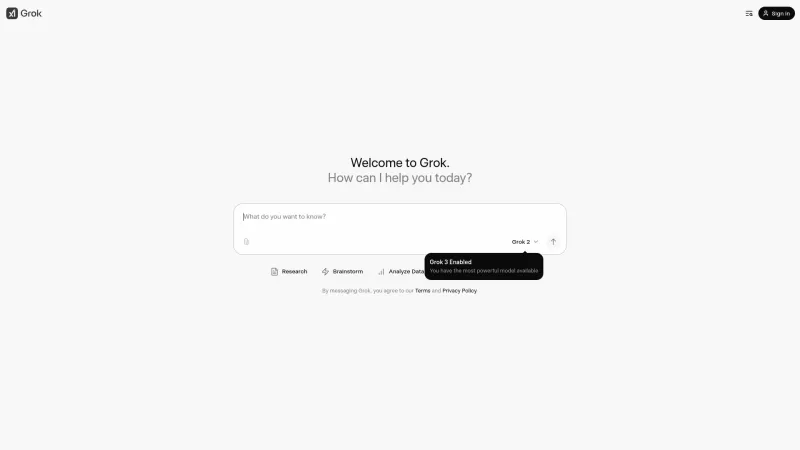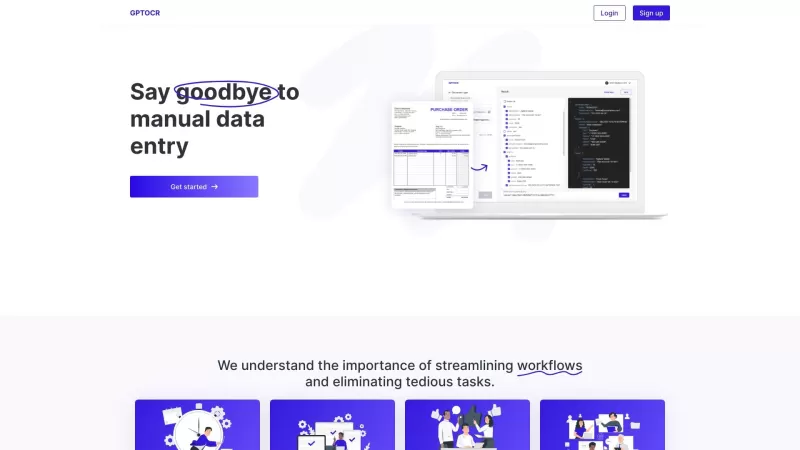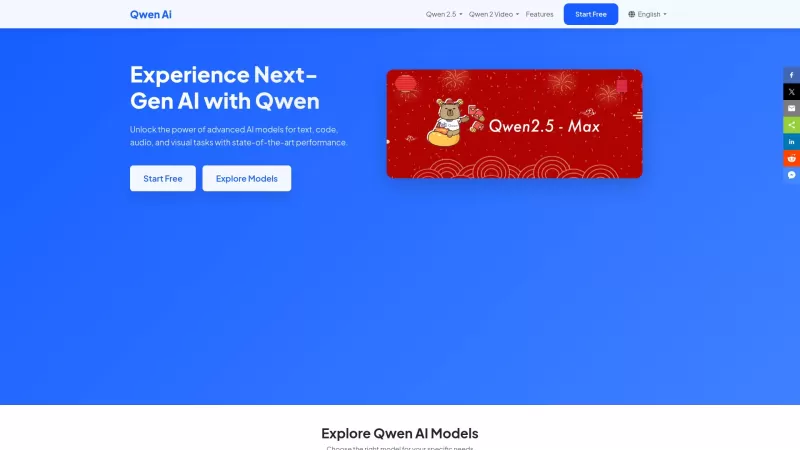Optimizing AI for Cost Efficiency and Superior Customer Experience
In today's dynamic business environment, customer experience (CX) and artificial intelligence (AI) are critical drivers of success. With economic challenges intensifying, companies face increasing demands to reduce expenses while elevating customer satisfaction. This article explores the obstacles and opportunities CX leaders encounter, offering actionable insights on leveraging AI to achieve cost savings and exceptional customer experiences.
Key Takeaways
The market is buzzing with AI enthusiasm, making it difficult for leaders to separate genuine value from exaggerated claims.
Economic volatility is pushing CX and contact center leaders to streamline costs.
Prioritizing CX investments during economic slumps can yield a competitive edge during recovery.
AI advancements enable businesses to cut costs while enhancing employee satisfaction.
AI unifies fragmented data, delivering a comprehensive view of customers.
A gradual AI rollout, starting small and tracking incremental results, builds trust and adoption.
Navigating AI in the CX Ecosystem
Overcoming AI Hype
The marketplace is flooded with AI discussions, challenging leaders to distinguish authentic innovations from marketing noise. Identifying AI solutions that drive measurable value, boost efficiency, and enhance customer interactions is critical, rather than pursuing every trending tool.
To cut through the noise, businesses must adopt a rigorous evaluation process. This involves assessing AI solutions' capabilities, limitations, and ROI while aligning them with customer needs to ensure seamless, valuable experiences. Focusing on practical applications and measurable results enables leaders to harness AI’s transformative potential for CX.
Additionally, fostering a culture of continuous learning is vital. Staying updated on AI trends through industry events, webinars, and expert engagement helps businesses identify new opportunities, refine implementations, and maintain a competitive advantage.

Economic Pressures and Cost Optimization
In today’s uncertain economy, businesses face intense pressure to reduce costs across operations, including CX initiatives. Factors like inflation, supply chain issues, and changing consumer behaviors are driving this need. CX and contact center leaders must innovate to optimize resources and efficiency without compromising service quality.
Indiscriminate cost-cutting risks harming customer satisfaction and loyalty. Strategic measures, such as AI-powered automation, self-service platforms, and predictive analytics, can deliver significant savings while maintaining interaction quality. For example, AI chatbots can handle routine queries, allowing human agents to focus on complex tasks, while predictive analytics can proactively address customer retention.
Investing in CX during downturns also builds long-term loyalty, encouraging repeat business and positive referrals. This positions companies for growth and profitability when economic conditions improve.

Strategic Guidance for Leaders
Leveraging CX Investments in Downturns
Prioritizing CX during economic challenges provides a strategic advantage. Companies that maintain CX investments are better positioned to thrive when markets recover, gaining a competitive edge over those that cut back. These investments strengthen customer loyalty and influence business success.
This approach empowers businesses to equip agents with tools that streamline tasks and enrich interactions. Key focus areas include:
Automation: Deploy AI to handle repetitive tasks like data analysis, reducing errors and freeing resources for higher-value activities.
Decision-Making Support: Use AI to provide real-time guidance to agents, enabling prompt, personalized, and accurate customer support.
Accessibility and Empowerment: Ensure AI tools are user-friendly and accessible to all employees, boosting performance and enhancing CX.

Enhancing Employee Experience with AI
AI advancements offer opportunities to improve both customer and employee experiences while reducing costs. By integrating AI, businesses can enhance efficiency and productivity, transforming agent roles from transactional to strategic.
AI provides agents with deeper insights into customer profiles and needs, enabling personalized solutions. Streamlined workflows, user-friendly tools, and comprehensive training create a supportive environment, reducing turnover and improving service quality.

Unifying Data with AI
AI’s ability to connect fragmented data is a game-changer. By consolidating information from disparate systems, AI delivers a unified customer view, overcoming the challenges of siloed data.
Key benefits include:
Comprehensive Customer Insights: AI integrates data for a 360-degree view of customer needs and behaviors.
Informed Decisions: Real-time AI insights enable agents to deliver tailored solutions.
Predictive Power: AI anticipates trends and customer needs, allowing proactive issue resolution.
Gradual AI Adoption
A phased AI implementation minimizes risk and maximizes efficiency. Starting with a small, focused project allows businesses to measure impact and build confidence before scaling.
Select a Use Case: Choose a high-impact area like self-service or agent support to demonstrate AI’s value.
Measure Impact: Track metrics to evaluate AI’s effectiveness and refine strategies.
Scale Gradually: Expand AI use cases as success is proven, continuously optimizing performance.
Implementing AI Strategically in CX
Step 1: Set Clear CX Goals
Before adopting AI, define measurable CX objectives, such as improving satisfaction scores or reducing churn. Align AI initiatives with these goals to focus on high-impact areas, like using predictive analytics to address at-risk customers.
Step 2: Identify High-Value AI Use Cases
Pinpoint touchpoints in the customer journey where AI can enhance efficiency and personalization. Potential use cases include:
AI Chatbots: Automate routine queries for instant support.
Predictive Analytics: Proactively address customer retention.
Personalized Recommendations: Tailor offerings based on customer data.
Sentiment Analysis: Gauge customer feedback to improve experiences.
Agent Assistance: Provide real-time support for faster resolutions.
Step 3: Choose the Right AI Tools
Select AI solutions that align with your needs and budget. Evaluate vendors based on integration, scalability, security, and support. Request demos and pilot projects to ensure compatibility.
Step 4: Integrate AI Seamlessly
Work with IT teams and vendors to integrate AI into existing CX systems. Start with a pilot project, provide training, and gradually expand implementation as confidence grows.
Step 5: Monitor and Optimize
Track metrics like satisfaction scores and churn rates to assess AI performance. Continuously refine models to ensure accuracy and maximize ROI.
AI-Powered CX Pricing Models
Common Structures
AI-powered CX solutions come with varied pricing models, each impacting budgeting and ROI:
Subscription-Based: Pay recurring fees based on users or features, offering predictability and scalability.
Usage-Based: Pay for actual usage, ideal for fluctuating demand but less predictable.
One-Time License: Pay an upfront fee for perpetual use, with additional maintenance costs.
Hybrid Pricing: Combine elements of other models for flexibility.
Choose a model that aligns with your budget and long-term goals.
Pros and Cons of AI in CX
Pros
Enhanced Satisfaction: AI delivers personalized, efficient interactions.
Increased Efficiency: Automation frees agents for complex tasks.
Cost Savings: AI optimizes staffing and streamlines operations.
Data Insights: AI uncovers customer preferences for informed decisions.
24/7 Support: AI chatbots ensure constant availability.
Cons
High Implementation Costs: AI requires significant investment.
Algorithmic Bias: Biased data can lead to unfair outcomes.
Data Privacy Concerns: Handling customer data raises security issues.
Limited Empathy: AI may lack human emotional intelligence.
Job Displacement: Automation may reduce contact center roles.
Key Features of AI-Powered CX Platforms
Essential Capabilities
Choose platforms with:
Natural Language Processing (NLP): Understands and processes human language for effective interactions.
Machine Learning (ML): Adapts and improves over time.
Predictive Analytics: Forecasts trends and behaviors.
Chatbots and Virtual Assistants: Automates routine tasks with advanced NLP.
Sentiment Analysis: Gauges customer sentiment to enhance satisfaction.
Real-World AI Success in CX
Case Studies
Examples of AI-driven CX success include:
E-commerce: AI recommendations boost sales and engagement.
Healthcare: Chatbots streamline inquiries and appointments.
Financial Services: AI detects fraud in real-time.
Telecommunications: Predictive analytics reduces churn with targeted offers.
These cases highlight AI’s transformative impact across industries.
Frequently Asked Questions About AI in CX
How does AI reduce contact center costs?
AI cuts costs by automating routine tasks, optimizing staffing, and enhancing self-service. Chatbots handle high-volume inquiries, while predictive analytics and real-time guidance improve efficiency.
What are key considerations for AI in CX?
Define clear goals, choose high-value use cases, select suitable AI tools, integrate seamlessly, and continuously optimize performance to align with business objectives.
How does AI enhance personalization?
AI analyzes customer data to deliver tailored experiences across touchpoints, such as personalized recommendations and targeted interactions.
What role does data play in AI-driven CX?
Data fuels AI performance. High-quality, secure, and compliant data management ensures effective AI-driven CX initiatives.
Related Questions
What ethical considerations arise with AI in customer service?
Ethical concerns include mitigating algorithmic bias, ensuring transparency, safeguarding data privacy, and maintaining accountability through regular audits.
How can AI systems be accessible to all customers?
Adhere to accessibility standards like WCAG, offer alternative input/output methods, test with diverse users, provide customization options, and train staff on inclusivity best practices.
Related article
 Boost Business Growth with Creator Pro AI & ChatGPT Optimization
In today's competitive business landscape, artificial intelligence solutions have transitioned from optional upgrades to essential operational assets. Picture having access to a comprehensive AI toolkit, where each specialized application addresses s
Boost Business Growth with Creator Pro AI & ChatGPT Optimization
In today's competitive business landscape, artificial intelligence solutions have transitioned from optional upgrades to essential operational assets. Picture having access to a comprehensive AI toolkit, where each specialized application addresses s
 Mastering AI Orchestration: Transforming Chaos into a Streamlined Workflow
The growing adoption of AI agents across enterprises has created an urgent need for robust orchestration solutions. As businesses progress from single-agent implementations to complex multi-agent ecosystems, establishing an effective management frame
Mastering AI Orchestration: Transforming Chaos into a Streamlined Workflow
The growing adoption of AI agents across enterprises has created an urgent need for robust orchestration solutions. As businesses progress from single-agent implementations to complex multi-agent ecosystems, establishing an effective management frame
 Business Intelligence vs. Data Analytics: Understanding the Core Differences
While business intelligence (BI) and data analytics (DA) are frequently mentioned together, they serve distinct purposes in data-driven organizations. This guide clearly differentiates these critical disciplines, examining their unique contributions
Comments (0)
0/200
Business Intelligence vs. Data Analytics: Understanding the Core Differences
While business intelligence (BI) and data analytics (DA) are frequently mentioned together, they serve distinct purposes in data-driven organizations. This guide clearly differentiates these critical disciplines, examining their unique contributions
Comments (0)
0/200
In today's dynamic business environment, customer experience (CX) and artificial intelligence (AI) are critical drivers of success. With economic challenges intensifying, companies face increasing demands to reduce expenses while elevating customer satisfaction. This article explores the obstacles and opportunities CX leaders encounter, offering actionable insights on leveraging AI to achieve cost savings and exceptional customer experiences.
Key Takeaways
The market is buzzing with AI enthusiasm, making it difficult for leaders to separate genuine value from exaggerated claims.
Economic volatility is pushing CX and contact center leaders to streamline costs.
Prioritizing CX investments during economic slumps can yield a competitive edge during recovery.
AI advancements enable businesses to cut costs while enhancing employee satisfaction.
AI unifies fragmented data, delivering a comprehensive view of customers.
A gradual AI rollout, starting small and tracking incremental results, builds trust and adoption.
Navigating AI in the CX Ecosystem
Overcoming AI Hype
The marketplace is flooded with AI discussions, challenging leaders to distinguish authentic innovations from marketing noise. Identifying AI solutions that drive measurable value, boost efficiency, and enhance customer interactions is critical, rather than pursuing every trending tool.
To cut through the noise, businesses must adopt a rigorous evaluation process. This involves assessing AI solutions' capabilities, limitations, and ROI while aligning them with customer needs to ensure seamless, valuable experiences. Focusing on practical applications and measurable results enables leaders to harness AI’s transformative potential for CX.
Additionally, fostering a culture of continuous learning is vital. Staying updated on AI trends through industry events, webinars, and expert engagement helps businesses identify new opportunities, refine implementations, and maintain a competitive advantage.

Economic Pressures and Cost Optimization
In today’s uncertain economy, businesses face intense pressure to reduce costs across operations, including CX initiatives. Factors like inflation, supply chain issues, and changing consumer behaviors are driving this need. CX and contact center leaders must innovate to optimize resources and efficiency without compromising service quality.
Indiscriminate cost-cutting risks harming customer satisfaction and loyalty. Strategic measures, such as AI-powered automation, self-service platforms, and predictive analytics, can deliver significant savings while maintaining interaction quality. For example, AI chatbots can handle routine queries, allowing human agents to focus on complex tasks, while predictive analytics can proactively address customer retention.
Investing in CX during downturns also builds long-term loyalty, encouraging repeat business and positive referrals. This positions companies for growth and profitability when economic conditions improve.

Strategic Guidance for Leaders
Leveraging CX Investments in Downturns
Prioritizing CX during economic challenges provides a strategic advantage. Companies that maintain CX investments are better positioned to thrive when markets recover, gaining a competitive edge over those that cut back. These investments strengthen customer loyalty and influence business success.
This approach empowers businesses to equip agents with tools that streamline tasks and enrich interactions. Key focus areas include:
Automation: Deploy AI to handle repetitive tasks like data analysis, reducing errors and freeing resources for higher-value activities.
Decision-Making Support: Use AI to provide real-time guidance to agents, enabling prompt, personalized, and accurate customer support.
Accessibility and Empowerment: Ensure AI tools are user-friendly and accessible to all employees, boosting performance and enhancing CX.

Enhancing Employee Experience with AI
AI advancements offer opportunities to improve both customer and employee experiences while reducing costs. By integrating AI, businesses can enhance efficiency and productivity, transforming agent roles from transactional to strategic.
AI provides agents with deeper insights into customer profiles and needs, enabling personalized solutions. Streamlined workflows, user-friendly tools, and comprehensive training create a supportive environment, reducing turnover and improving service quality.

Unifying Data with AI
AI’s ability to connect fragmented data is a game-changer. By consolidating information from disparate systems, AI delivers a unified customer view, overcoming the challenges of siloed data.
Key benefits include:
Comprehensive Customer Insights: AI integrates data for a 360-degree view of customer needs and behaviors.
Informed Decisions: Real-time AI insights enable agents to deliver tailored solutions.
Predictive Power: AI anticipates trends and customer needs, allowing proactive issue resolution.
Gradual AI Adoption
A phased AI implementation minimizes risk and maximizes efficiency. Starting with a small, focused project allows businesses to measure impact and build confidence before scaling.
Select a Use Case: Choose a high-impact area like self-service or agent support to demonstrate AI’s value.
Measure Impact: Track metrics to evaluate AI’s effectiveness and refine strategies.
Scale Gradually: Expand AI use cases as success is proven, continuously optimizing performance.
Implementing AI Strategically in CX
Step 1: Set Clear CX Goals
Before adopting AI, define measurable CX objectives, such as improving satisfaction scores or reducing churn. Align AI initiatives with these goals to focus on high-impact areas, like using predictive analytics to address at-risk customers.
Step 2: Identify High-Value AI Use Cases
Pinpoint touchpoints in the customer journey where AI can enhance efficiency and personalization. Potential use cases include:
AI Chatbots: Automate routine queries for instant support.
Predictive Analytics: Proactively address customer retention.
Personalized Recommendations: Tailor offerings based on customer data.
Sentiment Analysis: Gauge customer feedback to improve experiences.
Agent Assistance: Provide real-time support for faster resolutions.
Step 3: Choose the Right AI Tools
Select AI solutions that align with your needs and budget. Evaluate vendors based on integration, scalability, security, and support. Request demos and pilot projects to ensure compatibility.
Step 4: Integrate AI Seamlessly
Work with IT teams and vendors to integrate AI into existing CX systems. Start with a pilot project, provide training, and gradually expand implementation as confidence grows.
Step 5: Monitor and Optimize
Track metrics like satisfaction scores and churn rates to assess AI performance. Continuously refine models to ensure accuracy and maximize ROI.
AI-Powered CX Pricing Models
Common Structures
AI-powered CX solutions come with varied pricing models, each impacting budgeting and ROI:
Subscription-Based: Pay recurring fees based on users or features, offering predictability and scalability.
Usage-Based: Pay for actual usage, ideal for fluctuating demand but less predictable.
One-Time License: Pay an upfront fee for perpetual use, with additional maintenance costs.
Hybrid Pricing: Combine elements of other models for flexibility.
Choose a model that aligns with your budget and long-term goals.
Pros and Cons of AI in CX
Pros
Enhanced Satisfaction: AI delivers personalized, efficient interactions.
Increased Efficiency: Automation frees agents for complex tasks.
Cost Savings: AI optimizes staffing and streamlines operations.
Data Insights: AI uncovers customer preferences for informed decisions.
24/7 Support: AI chatbots ensure constant availability.
Cons
High Implementation Costs: AI requires significant investment.
Algorithmic Bias: Biased data can lead to unfair outcomes.
Data Privacy Concerns: Handling customer data raises security issues.
Limited Empathy: AI may lack human emotional intelligence.
Job Displacement: Automation may reduce contact center roles.
Key Features of AI-Powered CX Platforms
Essential Capabilities
Choose platforms with:
Natural Language Processing (NLP): Understands and processes human language for effective interactions.
Machine Learning (ML): Adapts and improves over time.
Predictive Analytics: Forecasts trends and behaviors.
Chatbots and Virtual Assistants: Automates routine tasks with advanced NLP.
Sentiment Analysis: Gauges customer sentiment to enhance satisfaction.
Real-World AI Success in CX
Case Studies
Examples of AI-driven CX success include:
E-commerce: AI recommendations boost sales and engagement.
Healthcare: Chatbots streamline inquiries and appointments.
Financial Services: AI detects fraud in real-time.
Telecommunications: Predictive analytics reduces churn with targeted offers.
These cases highlight AI’s transformative impact across industries.
Frequently Asked Questions About AI in CX
How does AI reduce contact center costs?
AI cuts costs by automating routine tasks, optimizing staffing, and enhancing self-service. Chatbots handle high-volume inquiries, while predictive analytics and real-time guidance improve efficiency.
What are key considerations for AI in CX?
Define clear goals, choose high-value use cases, select suitable AI tools, integrate seamlessly, and continuously optimize performance to align with business objectives.
How does AI enhance personalization?
AI analyzes customer data to deliver tailored experiences across touchpoints, such as personalized recommendations and targeted interactions.
What role does data play in AI-driven CX?
Data fuels AI performance. High-quality, secure, and compliant data management ensures effective AI-driven CX initiatives.
Related Questions
What ethical considerations arise with AI in customer service?
Ethical concerns include mitigating algorithmic bias, ensuring transparency, safeguarding data privacy, and maintaining accountability through regular audits.
How can AI systems be accessible to all customers?
Adhere to accessibility standards like WCAG, offer alternative input/output methods, test with diverse users, provide customization options, and train staff on inclusivity best practices.
 Boost Business Growth with Creator Pro AI & ChatGPT Optimization
In today's competitive business landscape, artificial intelligence solutions have transitioned from optional upgrades to essential operational assets. Picture having access to a comprehensive AI toolkit, where each specialized application addresses s
Boost Business Growth with Creator Pro AI & ChatGPT Optimization
In today's competitive business landscape, artificial intelligence solutions have transitioned from optional upgrades to essential operational assets. Picture having access to a comprehensive AI toolkit, where each specialized application addresses s
 Mastering AI Orchestration: Transforming Chaos into a Streamlined Workflow
The growing adoption of AI agents across enterprises has created an urgent need for robust orchestration solutions. As businesses progress from single-agent implementations to complex multi-agent ecosystems, establishing an effective management frame
Mastering AI Orchestration: Transforming Chaos into a Streamlined Workflow
The growing adoption of AI agents across enterprises has created an urgent need for robust orchestration solutions. As businesses progress from single-agent implementations to complex multi-agent ecosystems, establishing an effective management frame
 Business Intelligence vs. Data Analytics: Understanding the Core Differences
While business intelligence (BI) and data analytics (DA) are frequently mentioned together, they serve distinct purposes in data-driven organizations. This guide clearly differentiates these critical disciplines, examining their unique contributions
Business Intelligence vs. Data Analytics: Understanding the Core Differences
While business intelligence (BI) and data analytics (DA) are frequently mentioned together, they serve distinct purposes in data-driven organizations. This guide clearly differentiates these critical disciplines, examining their unique contributions

